Brussels Griffon: characteristics of dogs and raising
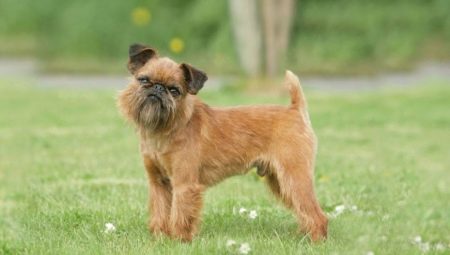
The Brussels Griffon is an adorable dog that looks like it has left the pages of a book about brownies. This shaggy and slightly clumsy bearded man will quickly win the hearts of all members of the owner's family.
Origin story
The history of the Brussels Griffons began a couple of centuries ago in Belgium, although there is evidence that dogs were known as early as the 15th century.
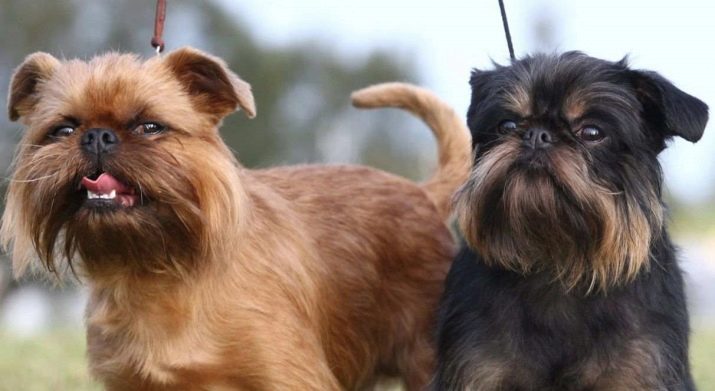
Contrary to popular belief, the name of the breed did not come from a mythical creature with the body of a lion and the head of an eagle. The concept of "griffon" is translated from French as "wire-haired", which fully corresponds to the characteristics of the animal's coat.
Favorable natural and climatic conditions of the Netherlands allowed the inhabitants of this small country to actively engage in the cultivation of land and growing crops. All this led to the fact that the barns in which the hay was stored became the site of a frequent raid of rodents, which were distinguished by an amazing gluttony - after a dozen such "visits" a Belgian family could completely lose their harvest. In order to get rid of pests, a new breed of dog was created. These dogs with great ease penetrated even the most inaccessible places and pulled out uninvited guests from there.
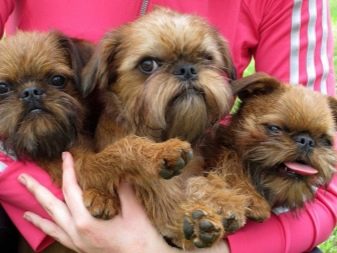

Outwardly, these dogs were very different from their modern descendants, but, nevertheless, the similarity is obvious. In the second half of the 19th century, the fate of the rat-catcher dogs changed a lot; it was at that moment that unusual animals attracted the attention of the local nobility. It is known that even Queen Maria Henrietta admired these dogs. It was this royal person who played a leading role in the further spread of the breed in the territory of the countries of the Old World.
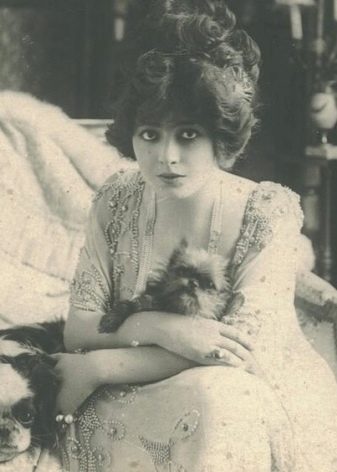
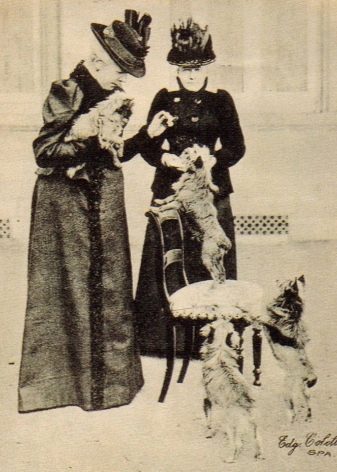
In 1882, the St. Hubert Society was formed, uniting all griffon breeders. The members of the association immediately set about breeding a small breed, and already in 1904 their work was crowned with success - the breed standard was officially adopted, and after another six years the animals were entered into the register of the American Kennel Association.
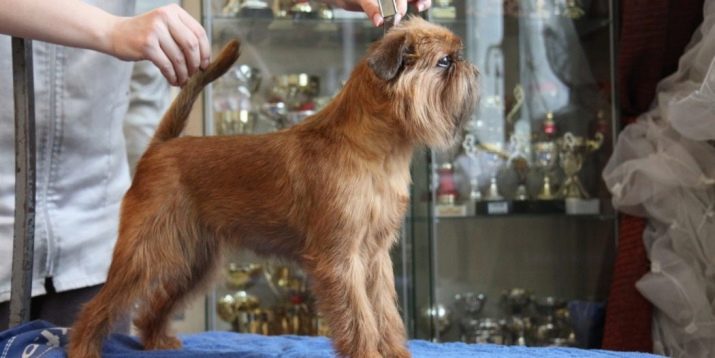
With the outbreak of war, a massive evacuation of animals to Great Britain began. This led to the fact that in 1926 there was a decrease in the level of exports of griffons from the Netherlands. After the Second World War, the number of dogs was mainly represented by America and England, and in their homeland their population decreased significantly.
In 1945, the first American club of griffon lovers was created, and in 1963 the adopted standard was slightly adjusted - in the new edition it is valid to this day. Despite all the efforts of the breeders, the breed is still small in number, and today it is very rare to meet a real Belgian Griffon. These funny bearded men did not receive significant distribution, but they still won the hearts of dog handlers all over the world due to their outstanding appearance and extremely friendly character.
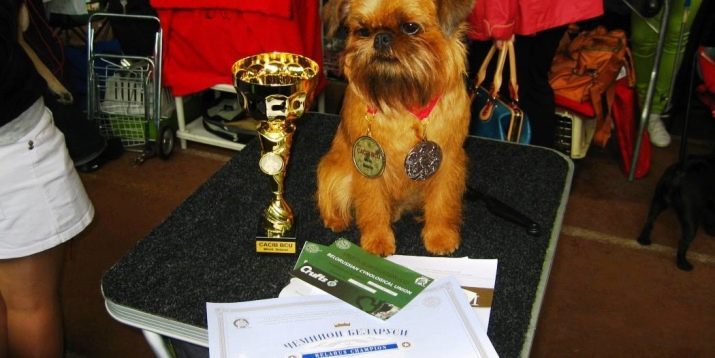
Features of the breed
The Brussels Griffon is classified as a decorative dog. Of course, he cannot be called a classic indoor dog, since these animals cannot be described as cute and docilerather, they are playful shooters, a little awkward, rude, with a rebellious fur and a truly human expression of the muzzle.

In accordance with the description of the accepted standards, the height of the dog at the withers is: in males - 27-32 cm, and in bitches - 25-30 cm.Weights vary from 35 to 46 kg, males look more stocky, strong and muscular - genital the differences are very clear. The griffon's head is round, in relation to the body it looks large, the occipital protuberance and brow ridges are relatively invisible. The skull is large and large.

The muzzle of the Brussels griffons is short, slightly turned up, usually does not exceed 2 cm. The transition of the frontal part to the bridge of the nose is sharp, the nostrils are rather massive, separated by a furrow. The lips fit tightly to the teeth, have a pronounced dark border. If the mouth is closed, then the teeth and tongue of the animal are not visible. The coat on the muzzle is a couple of tones lighter than on the rest of the body. The ears of dogs of this breed are small, stand high, located at a significant distance from each other, slightly curved forward.
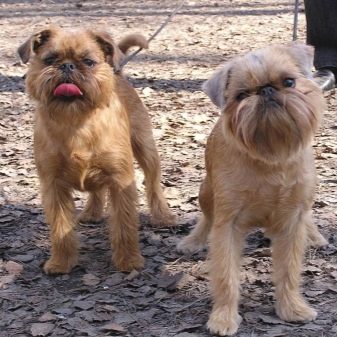
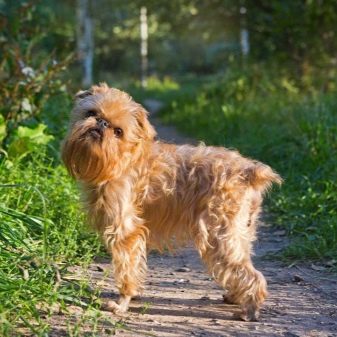
The eyes are set wide apart and in line. Quite large, rounded, but not convex. All people familiar with this breed note the "humanity" of the look, thanks to which even the youngest puppies give the impression of wise dogs. The eyelids fit snugly against the eyes, the eyelashes are long, creating the visual effect of black edging.
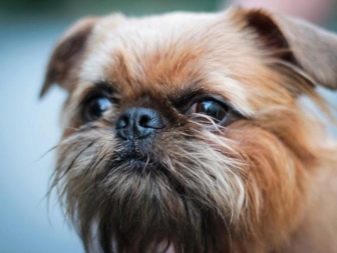

The lower jaw has a pronounced U-shape, is slightly bent upward, the incisors are parallel. The neck of the Brussels Griffon is set high and has noticeable bulges, but does not give the impression of being weighted due to its medium length and lean muscular part. The shape of the body is rather square, while the height of the dog at the withers coincides with the length of the body. Due to the highly developed skeleton, the feeling is created that the pet's sternum protrudes forward. The ribs are well-rounded, the shoulder-blades are tightly pressed.
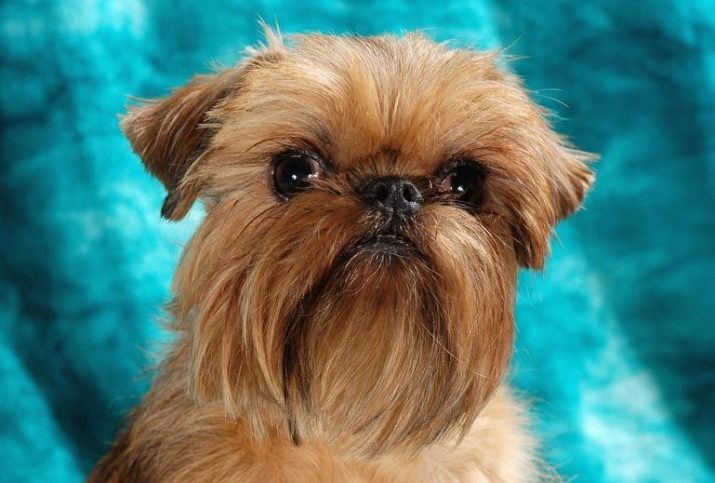
The back is strong, muscular, flowing smoothly into the lower back. The belly is tucked up, the groin is well defined. Griffon is distinguished by a high tail - the dog wears it raised so that the tip invariably "looks" at the back, but at the same time does not touch it and does not curl. The limbs of the animal are characterized by well-developed bones and strong muscles. The front legs are located at a considerable distance from each other, strictly parallel.The hind limbs protrude slightly beyond the ischial tubercles, the ribs are distinguished by pronounced muscles. Paws are rounded, pads are hard, dark-colored.
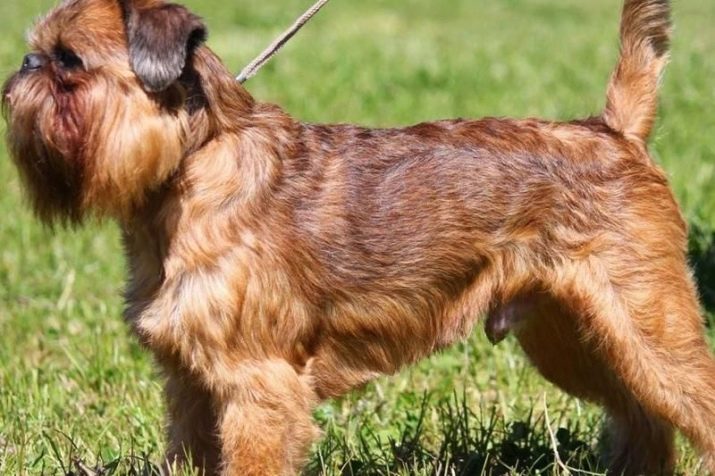
Due to these features of the limbs, griffons usually move at a trot: the hind legs make a powerful push, while the front legs are moderately thrown forward. The back remains level and straight while running. Guard hair is thick, wiry - according to standards, the coarser the coat the better. The hairs on the muzzle are longer as they form the mustache, sideburns and goatee.
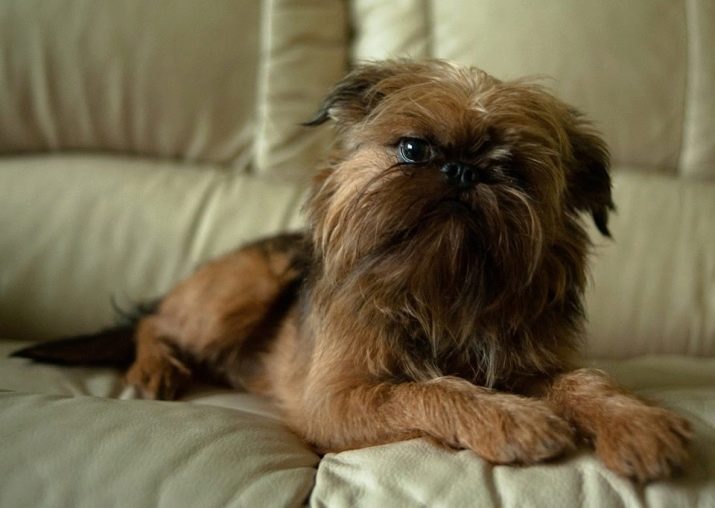
The following colors are allowed:
- red, combined with a brown "mask";
- beige with a "mask" of red-brown or black;
- completely black.
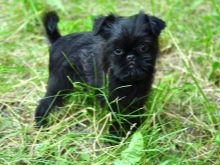
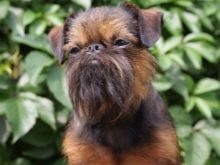
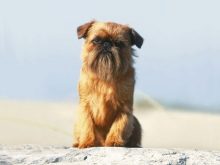
Character and behavior
The Brussels Griffon is distinguished by the following character traits.
- Shyness. These animals are very shy and shy, they are afraid of strangers and try to minimize contact with them. They feel sincere affection and desire to communicate only in relation to their owner.
- Fear of loneliness. Griffons are considered companion dogs, which means that the constant presence of the owner nearby is vital for them. If you leave this animal alone for a long time, it begins to wither and get sick, which can even lead to the premature death of your pet. This animal, like no other, requires stability and constancy - moving to a new place of residence or a change of owner can become a serious stress for him.
- Activity. Dogs of this breed are real sanguine people who love to be in the spotlight. These animals are distinguished by curiosity and mobility.
- Dominance. The Brussels people have a rather strong character, because the dogs in every possible way strive to command both the family members of the owner and other pets living under the same roof.
- Courage. The genes of the rat-catcher ancestors determined the hunting instincts of the dog. They, as already mentioned above, shy away from strangers, but if they see that there is danger from a stranger in relation to the owner, they will boldly stand up for his protection.
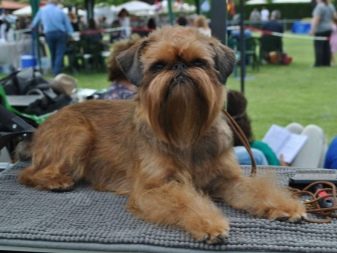
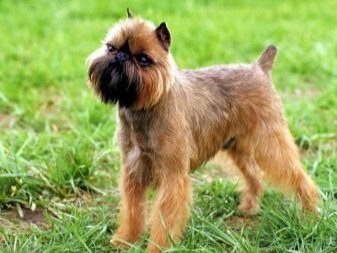
Dogs of this breed do not tolerate obsession at all, therefore they are not suitable for life in a family with small children. These animals do not like loud screams and rough treatment, but they also do not accept familiarity. If one of the owners accidentally or intentionally hurts him, the griffon can bite in response.
As for other pets, the griffons get along well with their relatives, but they are especially loyal to cats. The only exceptions are rodents - if there are decorative rats, hamsters or guinea pigs in the house, then they can become an object of hunting from the side of the pet.
If you want to have two griffons, then it is best to acquire different sexes, but if a dog of a larger breed lives in the house, then the griffon may be uncomfortable with it, so it is better to refrain from such a neighborhood.
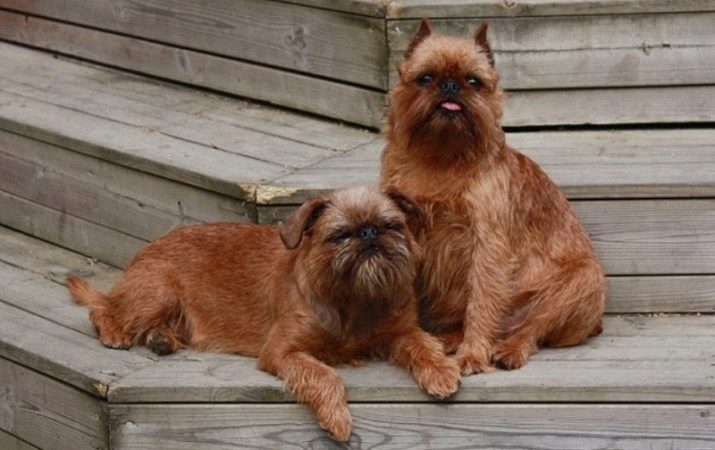
How to choose a puppy?
If you are determined to become the owner of a griffon puppy, then even before buying it is necessary to create conditions for its comfortable existence. Therefore, the first thing a future owner should buy is sunbeds, bowls, drinkers and toys, as well as all the necessary dog hygiene products.

There are not so many kennels engaged in breeding dogs of this breed. Be sure to collect as much information as possible about the sellers - you must be sure that you have met conscientious breeders who, under the guise of a healthy puppy, will not slip you a sick and weakened animal with psychological problems.
Decide in advance what gender you need the dog. Keep in mind that males are more aggressive, while females, on the other hand, are loyal and submissive. However, during estrus, females can become a source of discomfort - during a walk you will have to repel the attacks of the "suitors" who have fled from all the surrounding gateways.
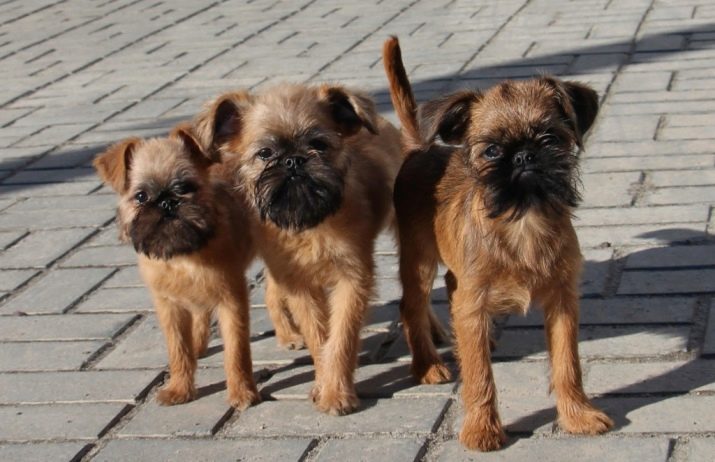
The optimal age for buying is considered to be 6-8 weeks, if you tear the baby away from the mother earlier, in adulthood such a dog will be characterized by poor socialization. When choosing, be sure to watch not one puppy, but the entire litter - if you notice that all the dogs in it are shy or, conversely, behave aggressively, it is better to give preference to another dog family.
An important characteristic will be the puppy's mood - normally the pet should be curious, cheerful and playful. Do a little test - take a rattle or a bunch of keys in your hand and hand it to the young griffon. If he immediately grabs the toy, then before you is a healthy dog, which is happy to draw attention to the new taste, color and smell.
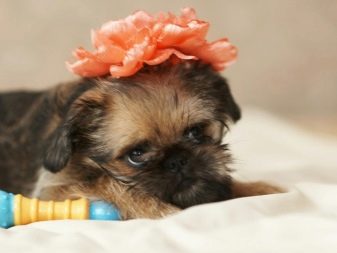
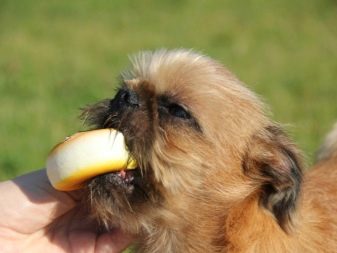
You should not buy the most well-fed puppy, but excessive thinness can also become a subject of caution. It is best to choose the middle ground and buy a medium-sized puppy. Examine the pet's coat - it should be thick, without bald spots, ears and eyes should be clean, with no signs of discharge.
In reliable nurseries, each animal has a complete set of documents: pedigree and veterinary passport. Be sure to find out in what conditions the puppy was kept, and how he was fed - it is not recommended to change the diet for the period of adaptation of the animal. Brussels Griffon puppies will not be cheap - for example, a healthy animal with an excellent pedigree costs about 40 thousand rubles. You can buy a puppy from hands much cheaper - for 15-20 thousand, but in this case you cannot be sure of the strong immunity of the dog and its stable mental state.
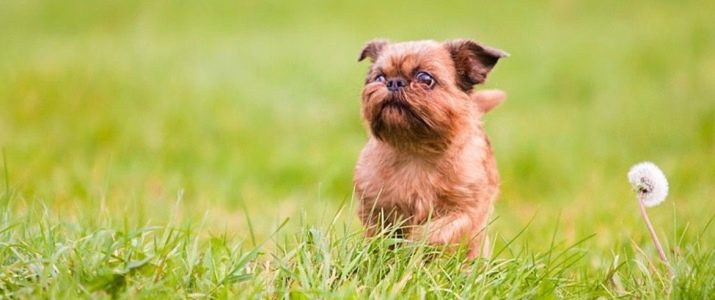
Maintenance and care
For a compact griffon, a separate corner is usually allocated in the house, although the animal itself prefers to spend time on the master's sofa or in an easy chair.
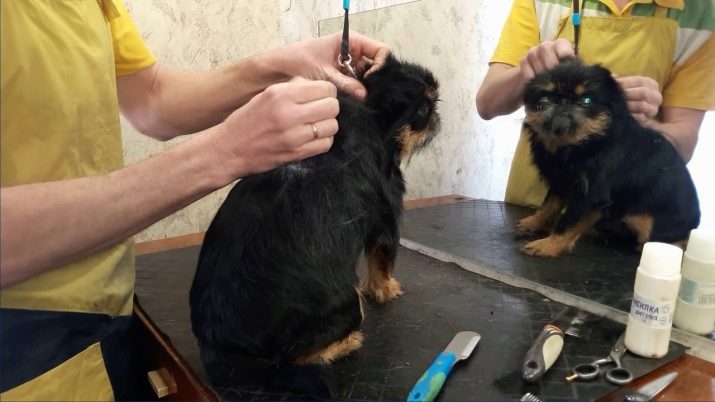
The dog does not need professional grooming, but there are some rules for grooming the coat.
- There are long hairs on the face and paws, so they require frequent brushing.
- Short and coarse hair on the body must be combed with a furminator to remove the undercoat.
- In the spring, as well as in the fall, all guard hairs that have died off in a few months are subject to mandatory plucking. Usually the dog is trimmed with a special thumb attachment and a knife. Periodic trimming of the beard and eyebrows of the animal is allowed, but the dog should not be completely cut, since in this case the correctness of the guard hair growth is disturbed.
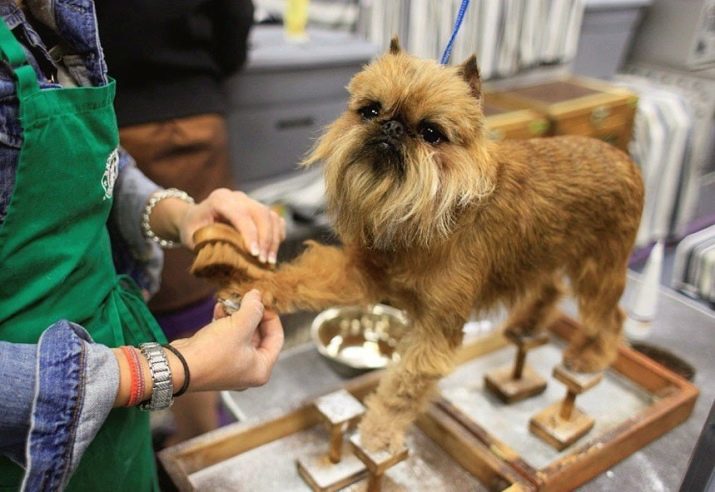
Every two weeks it is necessary to trim the pet's claws with special clippers, but keep in mind that only the tip of the nail needs to be removed, and the living part of the plate should not be touched. Because of the long and thick eyebrows, the eyes of the animal often become inflamed, therefore they must be wiped every day with cotton pads dipped in chamomile infusion or a weak solution of furacilin. Anti-inflammatory drops can be instilled once a week to prevent disease. Ears should be scanned every 7-10 days - they are cleaned with veterinary lotion or boric acid.

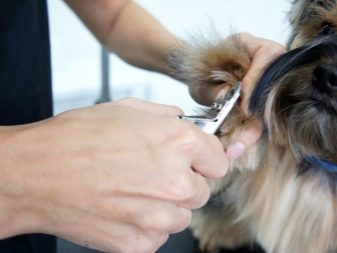
It is very important to provide the griffon with good oral care. The fact is that an environment favorable for the reproduction of pathogenic bacteria has been created there, therefore, it is necessary to accustom the pet to cleaning dental plaque from an early age - this must be done at least once a week. If the dog is on dry food, then the frequency of processing can be reduced to once a month - dry and hard food pellets by themselves help to remove plaque.
To brush their teeth, use special pastes with the taste of meat or fish, some breeders from time to time rub their pet's teeth with activated charcoal, which stops the growth of bacteria.
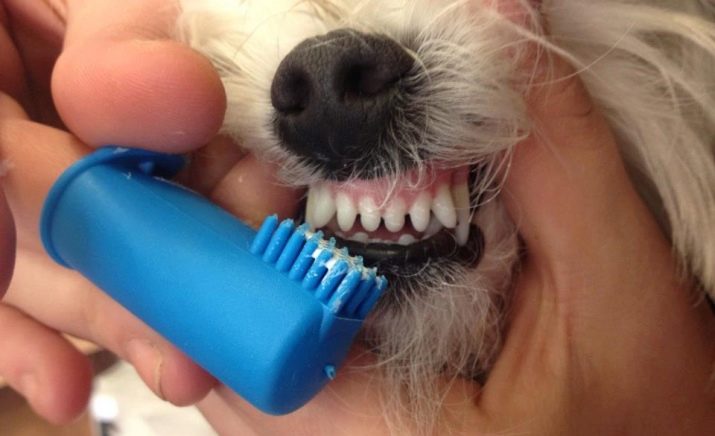
Nutrition
Griffons are dogs that are quite picky in everything when it comes to food, it is very difficult to please such a pet. It is best to keep your dog on premium and super premium specialty foods such as Royal Canin and Pro Plan. These products have a balanced composition, include all the necessary vitamins and minerals.
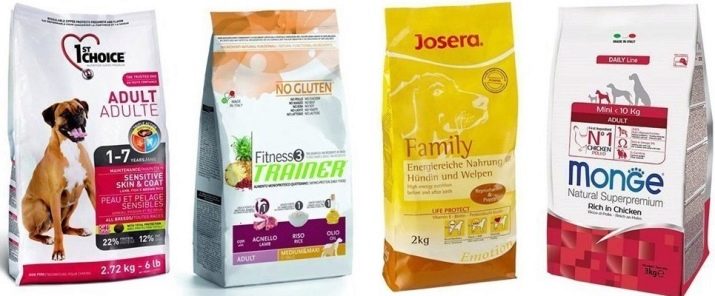
If you prefer natural feeding, keep in mind that 70% of the diet should be lean meat: beef, rabbit, veal, lamb or chicken. A couple of times a week, it is allowed to replace one feeding with offal, the remaining 30% are cereals, it is best to add buckwheat, rice or corn to the mash, as well as vegetables (carrots, pumpkin and cucumbers). Once a week, eggs (chicken or quail) and low-fat cottage cheese are allowed on the menu.
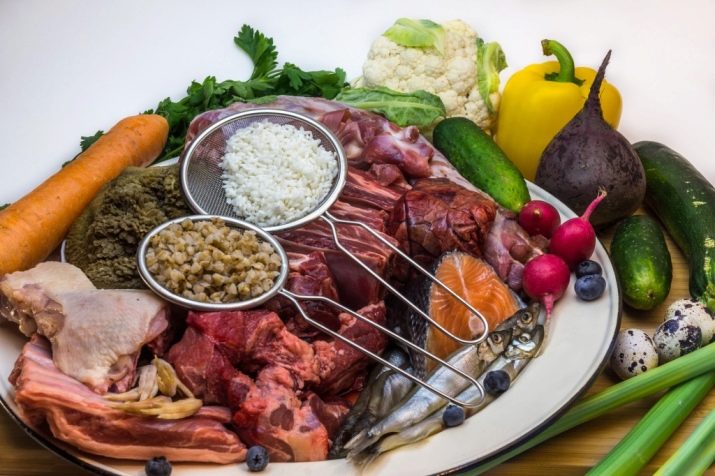
Take into account that the peculiarity of the bite of the animal is such that when chewing large pieces of food, the griffon may experience difficulties, therefore the products must be boiled until soft and chopped. An adult dog consumes about 500 g of food per day in two passes. For puppies up to three months old, liquid mash porridges are prepared on the basis of a milk mixture, the recommended frequency of feeding is every 3-4 hours, while the portion size should not exceed 150 ml.
By the age of 6 months, the dog is gradually transferred to four meals a day, and at eight the number of feedings is reduced to three. The animal switches to the adult mode by the year.
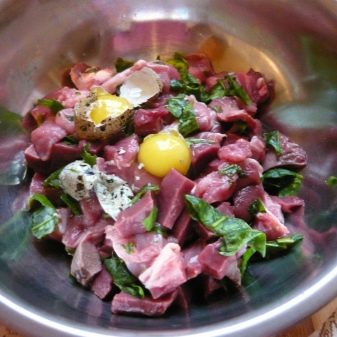
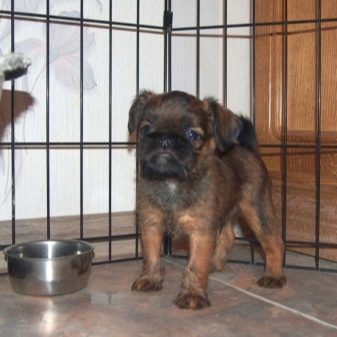
Education and training
When training a Brussels Griffon, you should know that this dog categorically cannot stand the frequent repetition of the same command - the owner can shout it out even day long, but the animal will do it its own way anyway. These dogs must be stimulated, since there is no other way to force them to execute the command.
However, the encouragement can be anything, even moral - griffons are quite capable of performing commands only out of a feeling of affection for their master, and as gratitude for the manifestation of love and attention. Dogs of this breed usually achieve great success in agility and quite successfully perform in all kinds of competitions.
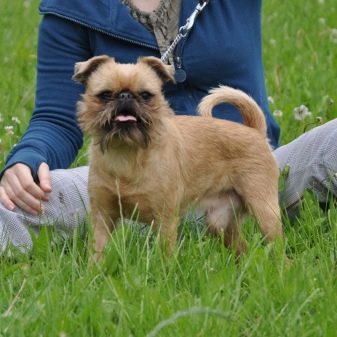
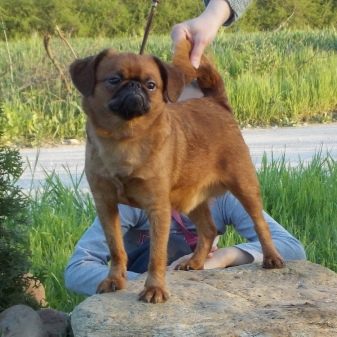
About who the Brussels Griffon is and how to raise him, see the next video.






































